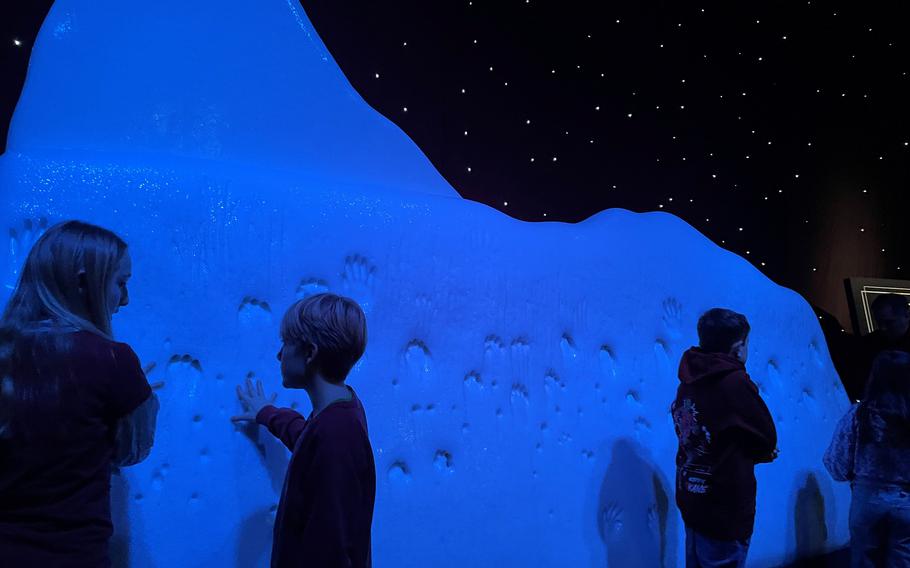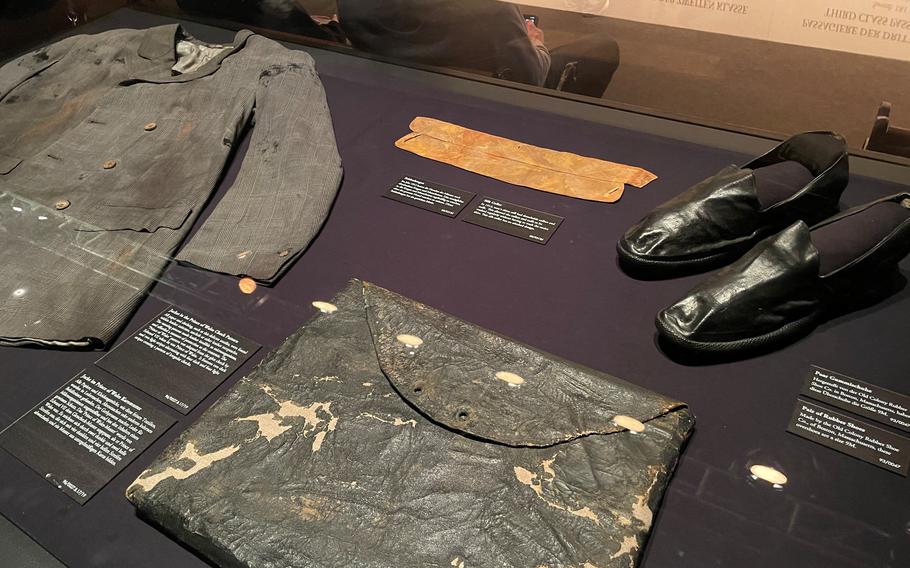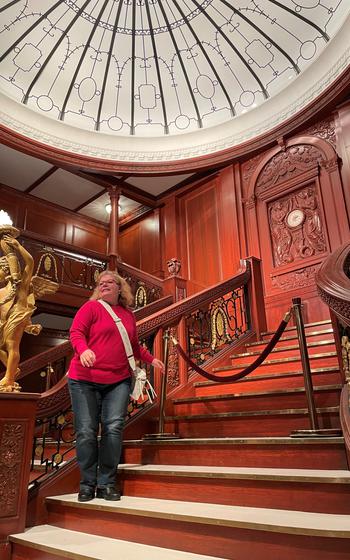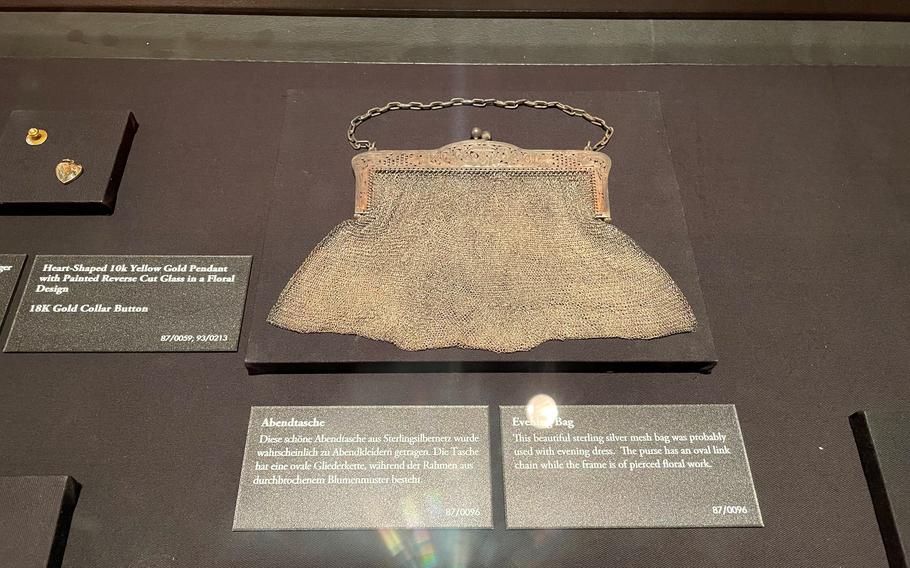
As the tour through the Titanic exhibition in Ludwigsburg, Germany, ends, the focus turns to the sinking of the ship. A block of iceberg gives visitors a sense of the frigid conditions people faced during the disaster in the Atlantic Ocean in 1912. (John Vandiver/Stars and Stripes)
Jack and his “I’m the king of the world” on the ship’s bow. Rose descending the opulent staircase aboard the luxury liner. And of course the desperate scramble for lifeboats as the vessel sank into the frigid Atlantic Ocean.
When I learned about a traveling Titanic exhibition in the German city of Ludwigsburg, just outside Stuttgart, I jumped at the chance to visit, with fond memories of the film in mind.

The Titanic exhibition in Ludwigsburg, Germany, has a little over a month left in its present location. The traveling exhibition was supposed to end in January but proved so popular that its stop in the Stuttgart area was extended. (John Vandiver/Stars and Stripes)
Visitors can get a look at hundreds of relics recovered from the ocean floor where the Titanic now rests. The exhibition also explains the ship’s history in detail and chronicles the lead-up to its collision with an iceberg on April 15, 1912.
I’m not sure I would have been so excited to go if it hadn’t been for James Cameron’s 1997 movie “Titanic,” which made a big impression when I first saw it nearly 30 years ago.
And at first, I was a little disappointed that the exhibition lacked any mention of or references to the blockbuster film. But there are assorted touches hinting that the program designers made their displays with the movie and its fans in mind.
As you go through the various rooms, one highlight is the iconic grand staircase reconstructed to Titanic specifications. It looked as I remembered it portrayed on the big screen.

The Titanic exhibition in Ludwigsburg, Germany, features replicas of various parts of the famed ship, including the grand staircase. It was prominently featured in the blockbuster film starring Leonardo DiCaprio that brought the 1912 disaster to the big screen. (John Vandiver/Stars and Stripes)
But there’s much more to delve into, such as the more than 200 artifacts from the wreckage, including voyagers’ personal items.
Among them was a well-known perfumer from the time, Adolphe Saalfeld, who survived the disaster. He was traveling with some of his perfume samples, which he left behind.
Those were among the recovered relics, contained in beakers enclosed in glass. Despite being over 100 years old, the perfume can still be smelled when the vials are uncased, according to a description provided in the exhibition.
Luggage, clothing, jewelry and items from the ship itself, such as utensils and kitchenware, also are part of the collection.

Titanic passengers' personal items, such as this silver mesh purse, are among the pieces displayed in an exhibition in Ludwigsburg, Germany. The story of the ill-fated luxury liner is told in rich detail through assorted displays in the exhibition. (John Vandiver/Stars and Stripes)
Toward the end, the exhibition deals with the sinking of the Titanic and what precipitated it, ranging from the difficulty of spotting icebergs under a full moon to the disappearance of the lookout binoculars in the rush to get the ship ready to sail.
When the iceberg came into view, it was too late. Two hours and 40 minutes after impact, the ship went under and nearly 1,500 people died, many from hypothermia as they floated in the 28-degree water.
To convey an inkling of what that chill felt like, the display includes a huge block of an actual iceberg and invites visitors to put their hands on it.
As we left, our family discussion turned to movie night. I insisted on introducing my kids to the story of the Titanic through the eyes of Jack and Rose.
But having not seen it myself in 27 years, I realized only later that I had forgotten about the nude scene. That required some unexpected lessons of a wholly different kind.
Titanic: Die Ausstellung (Titanic: The Exhibition)
Prices: About $30 for adults, $15 for children. Prices can vary according to entrance times. Family package discounts are available. Tickets must be purchased online.
Information: www.titanic-ausstellung.com, info@titanic-ausstellung.com